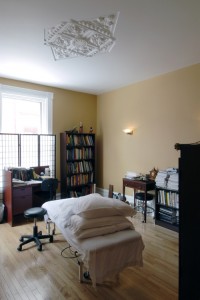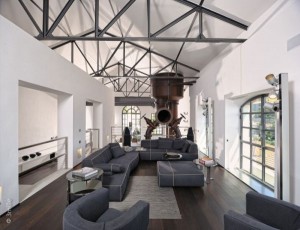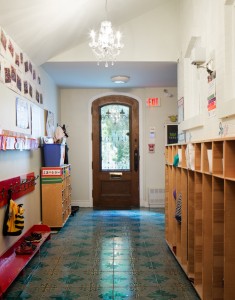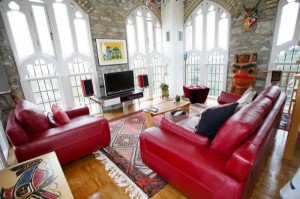As sustainability concerns mount and urban space becomes harder and harder to come by in Canadian cities, more people are choosing to convert older homes or buildings once used for other purposes into livable spaces as a solution to their housing needs. When buildings are converted into homes or other spaces while maintaining some of their unique or historic characteristics, it is known as “adaptive reuse.”
In many cases adaptive reuse applies to old buildings that have been neglected or fallen into disrepair such as factories, farms, churches or schools, but historic homes and heritage buildings may also be revamped and transformed into something new and modern.
There are many wonderful examples of adaptive reuse around the world and right here in our own backyard. In Ottawa, some of the city’s heritage buildings and other historically significant structures have been remodeled into homes, businesses, and public and social services while still preserving their most attractive and original qualities. Read more to see five of the most interesting ones from Ontario and abroad!
Somerset Clinic & Loft Home, Ottawa
Image via CSV Architects
This 100-year-old home in one of Ottawa’s heritage districts along Somerset Street was re-modeled to include a homeopathic clinic and a residential loft space upstairs for the owners. The ornate plaster features on the ceilings, original wood flooring and some stained glass windows were all preserved from the original structure. This renovation was also done with sustainability in mind by using reclaimed lumber and installing an energy-efficient furnace.
Water Cleaning Station Home, France
This awe-inspiring home was once a water cleaning station originally built in the south of France in 1910. The building fell into disrepair in the 1970s, and was in such bad shape by the time it was purchased in the mid-90s that it took 15 years to fully renovate. The owner was even able to preserve the massive, three-storey tall water tank as a central architectural feature of the home. The result is a stunning fusion of traditional Mediterranean architecture and modern industrial design that occupies over 5,000 square feet.
The Carriage House, Ottawa
Image via CSV Architects
The Carriage House was originally built in 1912 as a stable and then later converted into a home. A new entrance and stairwell was added and the home was renovated to house a daycare centre on the main floor and medical offices on the upper storey. The exterior of the home, the windows, front door, and tiled front entrance were all preserved and restored. The Carriage House project was completed on a restricted budget and on a tight timeline. It received an honourable mention from the City of Ottawa for architectural conservation and adaptive reuse in 2014.
Old Mill Vacation Home, Scotland
Image via Decoist and WT Architects
Architects created this vacation getaway in the south of Scotland by inserting a pre-fabricated timber home into the original structure of an old stone mill. Great care was taken to repair and fortify the stone building, while the hardwood flooring, spruce walls and a wood-burning stove inside work to enhance its secluded countryside cottage atmosphere. The architects and designers off-set the cozy vibe of this home and kept it modern with clean lines, big windows, minimalist décor and concrete and stainless steel accents.
Church-to-Home Conversion, Toronto
Image via Homedit
This Toronto church, originally built in 1910, was converted into a private residence in 2008. A modern four storey penthouse with a rooftop terrace now occupies the bell tower. Although some changes had to be made to the interior structure of the building to support the transition, the exterior of the church remains the same and many of its beautiful architectural features, such as the stone masonry and high arched windows, were left undisturbed.
To see more examples of heritage buildings and adaptive reuse in and around the Ottawa area, check out CSV Architects’ other projects here.
You can also take in some of the area’s built heritage by participating in one of Heritage Ottawa’s upcoming walking tours. The Ottawa area has over 300 designated heritage buildings and 18 heritage conservation districts to explore, so the tours run annually from June to October, starting this year on June 14th.
Upgrading existing structures and re-using building materials are great ways to build sustainably and reduce urban sprawl, while achieving a unique design and preserving the rich history of your home and/or business. Some adaptive re-use projects can be costly and time-consuming, but if done right, they can be tailored to your budget and schedule just like any build or renovation project.
What do you think of these heritage conversion projects? How would you like to live in the Peace Tower, or in one of the spires at the Notre-Dame Cathedral Basilica?
Visit our blog for more articles, including tips on renovating older homes.





